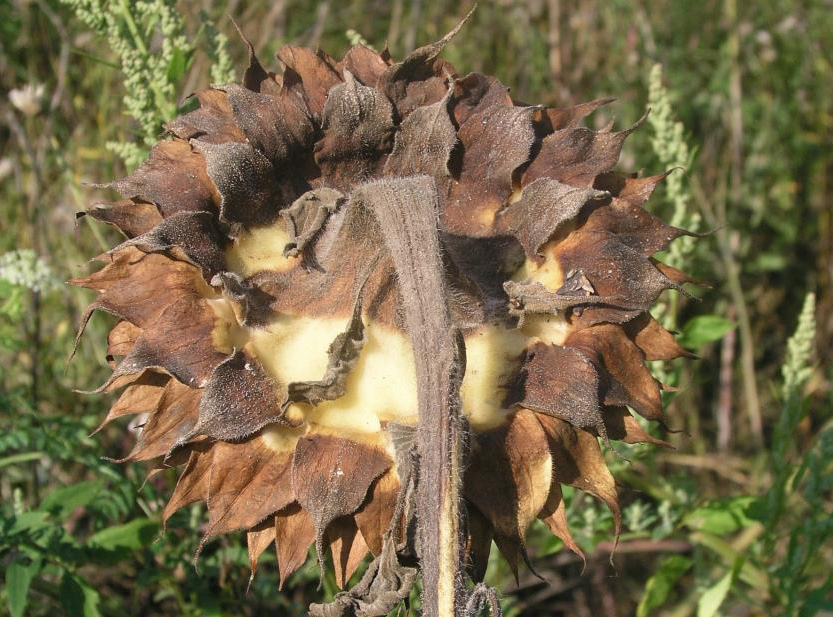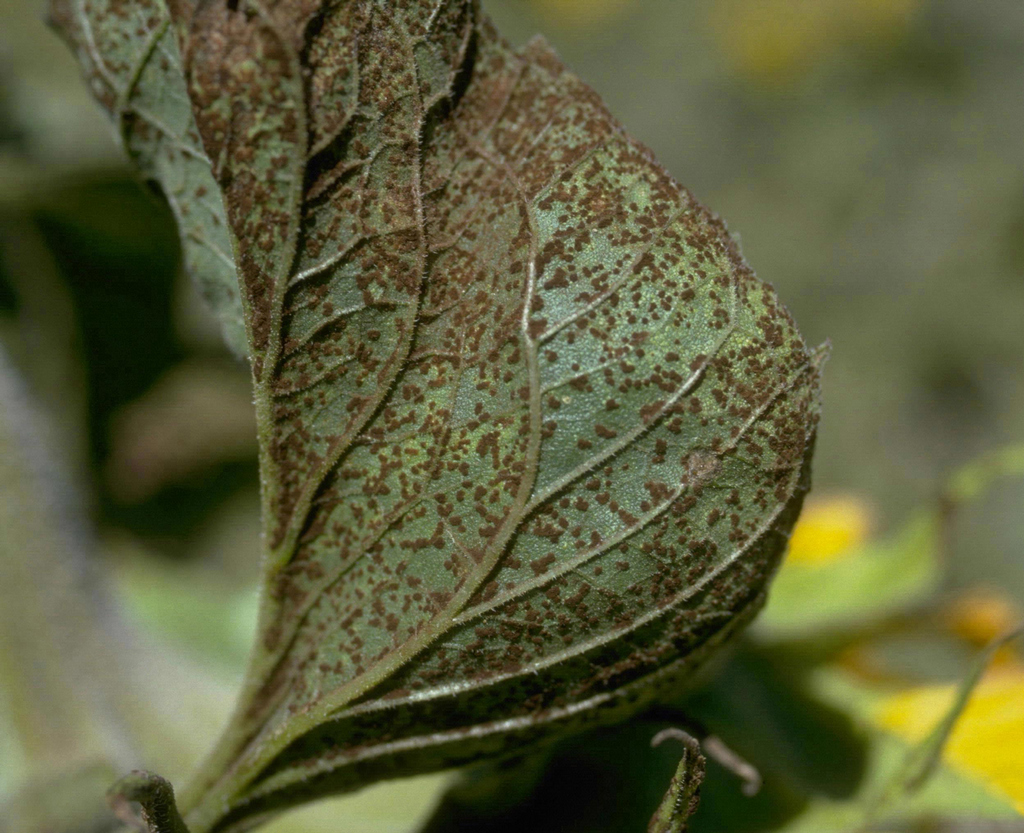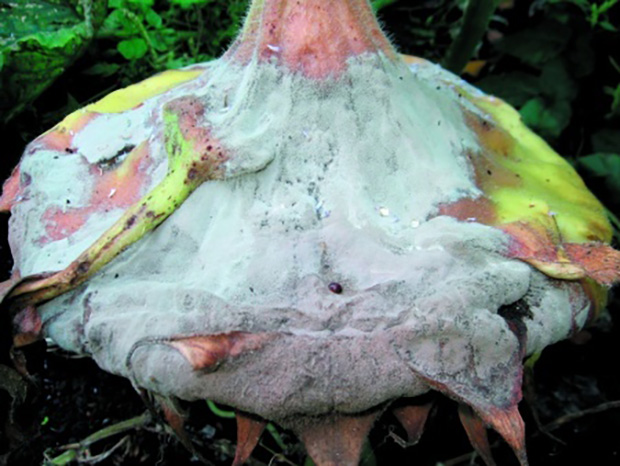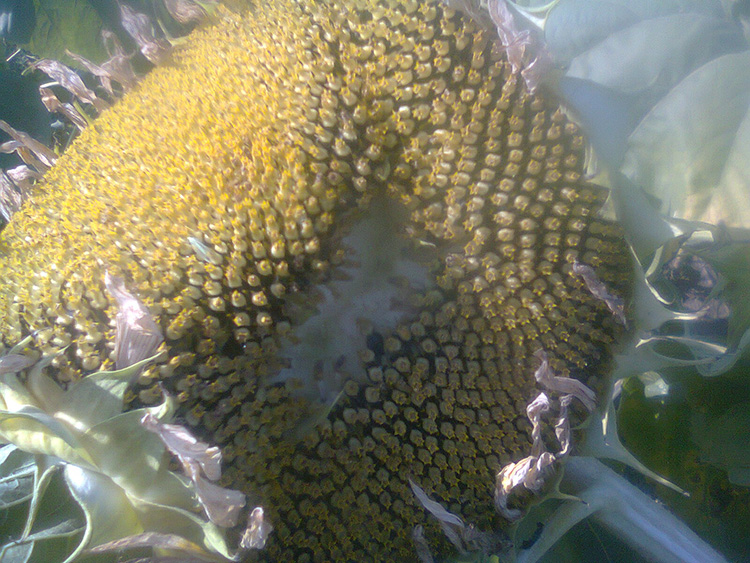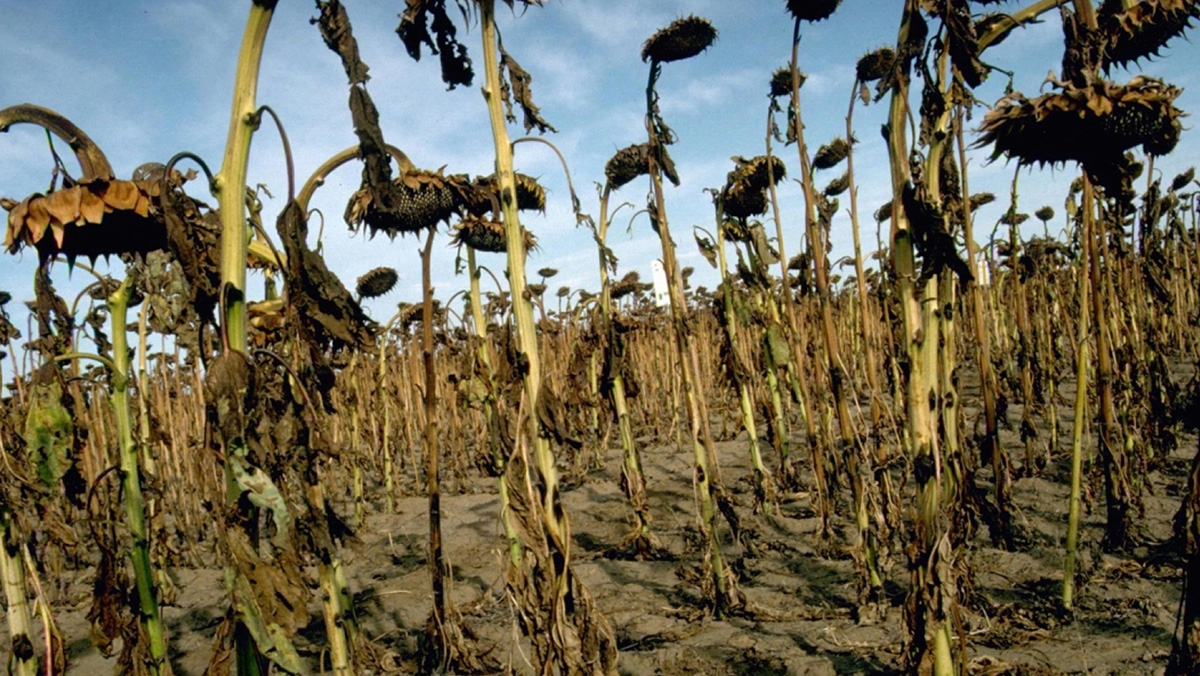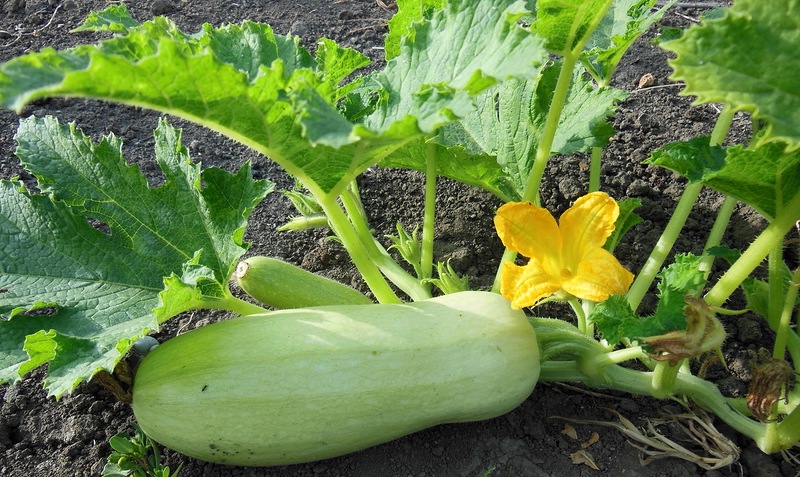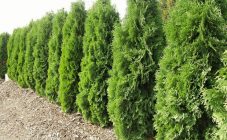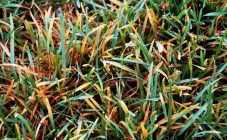Content:
Among the variety of agricultural crops in Russia, one of the most common is the annual sunflower. Like any plant, it is susceptible to disease. What they represent and how sunflower diseases are treated will be discussed below.
All about diseases of culture and methods of treatment
Diseases that sunflower is susceptible to include:
Rhizopus
Sunflower Dry Rot (Rhizopus arrhizus) - Rhizopus on sunflower is caused by fungi of the species Rhizopus. The characteristic features of the disease are:
- manifestation at the vegetative stage of development;
- dark spots covering the basket of the plant;
- an increase in the affected area of sunflower with the transition of infected areas from rotting to drying;
- resistance of the fungus to climatic conditions, which is the cause of the secondary appearance of the disease in the spring.
Rhizopus is prevented by prevention. The carriers of the Rhizopus fungus are insect pests that are sensitive to insecticidal effects. A necessary measure will be the elimination of the remnants of the infected crop in the autumn.
Sunflower rust
Sunflower rust is caused by the fungus Puccinia helianthi (Basidiomycete class). The disease is characterized by the following symptoms:
- the first manifestations occur during the growing season;
- orange spots on the tops of leaves at the beginning of the development of the disease;
- pustules with spores that form on the basket of the plant and gradually change their color from light red to dark;
- spores of infection remain in the soil layer, which provokes a repeated cycle of the disease.
Rust control measures on sunflower involve the destruction of weed vectors using chemical treatments, as well as planting varieties that are resistant to the pathogen.
This disease reduces the yield of annual sunflower by 37%. The loss of oiliness from rust is 9%.
Sunflower gray rot
The causative agent of the disease is the fungus Botryotinia fuckeliana (de Bary) Whetzel. The defining features of the disease are:
- defeat in the form of a white bloom of the entire aerial part of the plant during the growing season;
- formation of putrefactive spots on the back of the basket;
- covering the sunflower seed with a gray color with the subsequent loss of suitability;
- the optimal temperature regime for the development of the pathogen is 16 ° C-26 ° C.
For effective treatment, a complex of agrotechnical and chemical measures is needed:
- heat treatment of seeds;
- the use of fertilizers saturated with phosphorus and calcium cyanamide;
- weed control;
- incineration of post-harvest residues;
- soil treatment with biological products.
Gray mold can lead to significant crop loss. The disease has the greatest effect on sunflower in damp weather with high humidity.
Downy mildew
Another name for this disease is peresporosis.The cause of the occurrence is the Plasmopara mushroom, and the symptoms that reveal the presence of a pathogen are:
- significant slowdown in growth;
- poorly developed stems and root system;
- the formation of white plaque on the bottom of the sheets;
- covering the back of the basket with green spots.
To fight the disease should be timely prevention:
- sowing according to the rules of crop rotation;
- the use of varieties resistant to disease;
- treatment of the area sown with sunflower, herbicides.
The consequence of infection activity is the loss of up to 35% of the annual sunflower crop.
Fomoz of sunflower
The pathogen provoked, depending on the territory of distribution, by the fungi Phoma herbarum West var. helianthella Sacc and Phoma helianthi Alekseeva and having the following description:
- manifestation both in the vegetative and in the reproductive stage of sunflower development;
- the affected area of the leaves is characterized by dark spots with yellow borders;
- the stem of the plant is covered with black necrosis.
In case of severe damage, the pathogen reaches the core of the stem.
Prevention, which is based on a systematic approach, is based on the rules of crop rotation and seed pretreatment.
Sunflower Alternaria
The area of distribution of this infection is characterized by high air humidity and warm climatic conditions. In addition, there are the following manifestations:
- the period of the lesion falls on the vegetative period;
- seedlings have dark brown necrosis on the leaves;
- drying of leaves with concomitant destruction.
The cycle of application of chemicals to seeds will avoid the appearance of a pathogen.
General preventive measures
There are general rules for planting and caring for a plant, following which will reduce the risk of pathogens:
- the sunflower should be planted in medium loamy soil;
- before planting, the seeds should be sorted and processed (a fungicide should be used for processing);
- the distance between the planted seeds should be 80-95 cm, if we are talking about large varieties, and 50-55 cm in the case of smaller representatives of this culture;
- the land for planting sunflower should be fertilized, and during the growth process the plant should be watered periodically;
- it is worth paying attention to the appearance on the stem, leaves and basket of spots that have a dark or rusty hue, as well as to the possible release from the resulting swellings, since these are signs of a plant ailment;
- after harvesting, it is recommended not to plant sunflowers in the same area for up to 3 years.
Only with the proper approach to the cultivation of annual sunflower will the gardener be rewarded with a good harvest of tasty and healthy fruits, from which oil, urbech and sunflower cake are prepared. But, if you miss the moment of development of any of the diseases described above, then you can not even dream of a great collection of seeds.
